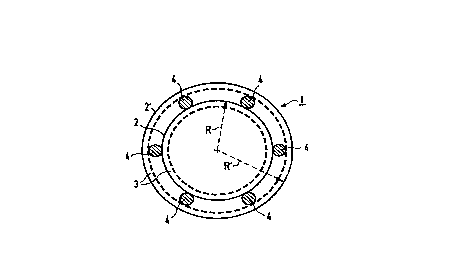Une partie des informations de ce site Web a été fournie par des sources externes. Le gouvernement du Canada n'assume aucune responsabilité concernant la précision, l'actualité ou la fiabilité des informations fournies par les sources externes. Les utilisateurs qui désirent employer cette information devraient consulter directement la source des informations. Le contenu fourni par les sources externes n'est pas assujetti aux exigences sur les langues officielles, la protection des renseignements personnels et l'accessibilité.
L'apparition de différences dans le texte et l'image des Revendications et de l'Abrégé dépend du moment auquel le document est publié. Les textes des Revendications et de l'Abrégé sont affichés :
| (12) Demande de brevet: | (11) CA 2268919 |
|---|---|
| (54) Titre français: | FILTRE POUR AEROSOL |
| (54) Titre anglais: | AEROSOL FILTER |
| Statut: | Réputée abandonnée et au-delà du délai pour le rétablissement - en attente de la réponse à l’avis de communication rejetée |
| (51) Classification internationale des brevets (CIB): |
|
|---|---|
| (72) Inventeurs : |
|
| (73) Titulaires : |
|
| (71) Demandeurs : |
|
| (74) Agent: | SMART & BIGGAR LP |
| (74) Co-agent: | |
| (45) Délivré: | |
| (86) Date de dépôt PCT: | 1996-10-17 |
| (87) Mise à la disponibilité du public: | 1998-04-30 |
| Requête d'examen: | 2001-05-03 |
| Licence disponible: | S.O. |
| Cédé au domaine public: | S.O. |
| (25) Langue des documents déposés: | Anglais |
| Traité de coopération en matière de brevets (PCT): | Oui |
|---|---|
| (86) Numéro de la demande PCT: | PCT/EP1996/004523 |
| (87) Numéro de publication internationale PCT: | WO 1998017372 |
| (85) Entrée nationale: | 1999-04-15 |
| (30) Données de priorité de la demande: | S.O. |
|---|
Filtre pour aérosol (1) comprenant une pluralité de surfaces filtrantes (2, 2') de forme générale cylindrique, disposées coaxialement, caractérisé en ce que chaque surface filtrante (2, 2') présente un tissu métallique (3). Grâce à l'utilisation de ce tissu métallique (3) pour les surfaces filtrantes (2, 2'), le filtre (1) est facile à nettoyer et, par conséquent, facile à réutiliser. En outre, un tel filtre pour aérosol (1) est particulièrement résistant aux hautes températures comme aux basses températures, ainsi qu'à la corrosion.
An aerosol filter (1) comprising a plurality of coaxially arranged, basically
cylindrical filtering surfaces (2,2') characterized in that each filtering
surface (2,2') has a metallic tissue (3). The filter is easy to clean and can
be easily re-used due to metallic tissue (3) used for filtering surfaces
(2,2'). In addition, the aerosol filter (1) is particularly resistant to high
and low temperatures and to corrosion.
Note : Les revendications sont présentées dans la langue officielle dans laquelle elles ont été soumises.
Note : Les descriptions sont présentées dans la langue officielle dans laquelle elles ont été soumises.

2024-08-01 : Dans le cadre de la transition vers les Brevets de nouvelle génération (BNG), la base de données sur les brevets canadiens (BDBC) contient désormais un Historique d'événement plus détaillé, qui reproduit le Journal des événements de notre nouvelle solution interne.
Veuillez noter que les événements débutant par « Inactive : » se réfèrent à des événements qui ne sont plus utilisés dans notre nouvelle solution interne.
Pour une meilleure compréhension de l'état de la demande ou brevet qui figure sur cette page, la rubrique Mise en garde , et les descriptions de Brevet , Historique d'événement , Taxes périodiques et Historique des paiements devraient être consultées.
| Description | Date |
|---|---|
| Demande non rétablie avant l'échéance | 2003-10-17 |
| Le délai pour l'annulation est expiré | 2003-10-17 |
| Réputée abandonnée - omission de répondre à un avis sur les taxes pour le maintien en état | 2002-10-17 |
| Lettre envoyée | 2002-01-10 |
| Lettre envoyée | 2001-05-28 |
| Modification reçue - modification volontaire | 2001-05-03 |
| Requête d'examen reçue | 2001-05-03 |
| Toutes les exigences pour l'examen - jugée conforme | 2001-05-03 |
| Exigences pour une requête d'examen - jugée conforme | 2001-05-03 |
| Inactive : Page couverture publiée | 1999-06-22 |
| Lettre envoyée | 1999-05-21 |
| Inactive : CIB en 1re position | 1999-05-21 |
| Inactive : Notice - Entrée phase nat. - Pas de RE | 1999-05-21 |
| Inactive : CIB attribuée | 1999-05-21 |
| Demande reçue - PCT | 1999-05-14 |
| Demande publiée (accessible au public) | 1998-04-30 |
| Date d'abandonnement | Raison | Date de rétablissement |
|---|---|---|
| 2002-10-17 |
Le dernier paiement a été reçu le 2001-08-02
Avis : Si le paiement en totalité n'a pas été reçu au plus tard à la date indiquée, une taxe supplémentaire peut être imposée, soit une des taxes suivantes :
Veuillez vous référer à la page web des taxes sur les brevets de l'OPIC pour voir tous les montants actuels des taxes.
| Type de taxes | Anniversaire | Échéance | Date payée |
|---|---|---|---|
| TM (demande, 2e anniv.) - générale | 02 | 1998-10-19 | 1999-04-15 |
| Enregistrement d'un document | 1999-04-15 | ||
| Taxe nationale de base - générale | 1999-04-15 | ||
| TM (demande, 3e anniv.) - générale | 03 | 1999-10-18 | 1999-09-15 |
| TM (demande, 4e anniv.) - générale | 04 | 2000-10-17 | 2000-09-19 |
| Requête d'examen - générale | 2001-05-03 | ||
| TM (demande, 5e anniv.) - générale | 05 | 2001-10-17 | 2001-08-02 |
| Enregistrement d'un document | 2001-11-09 |
Les titulaires actuels et antérieures au dossier sont affichés en ordre alphabétique.
| Titulaires actuels au dossier |
|---|
| FRAMATOME ANP GMBH |
| Titulaires antérieures au dossier |
|---|
| JOHANN LISSON |
| KARL-HEINZ KLEINSCHROTH |
| KLAUS BLINN |
| VIKTOR GLIHA |